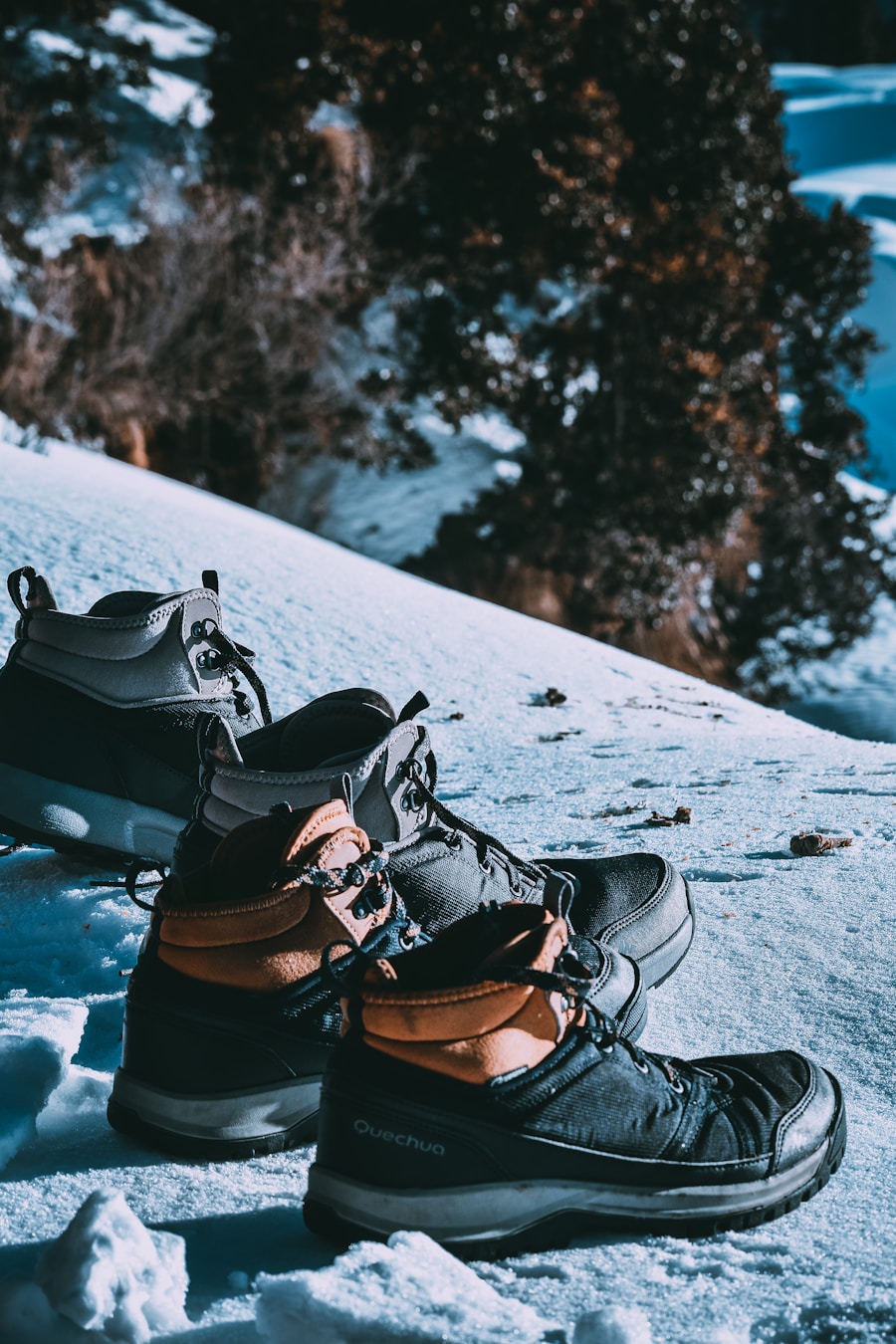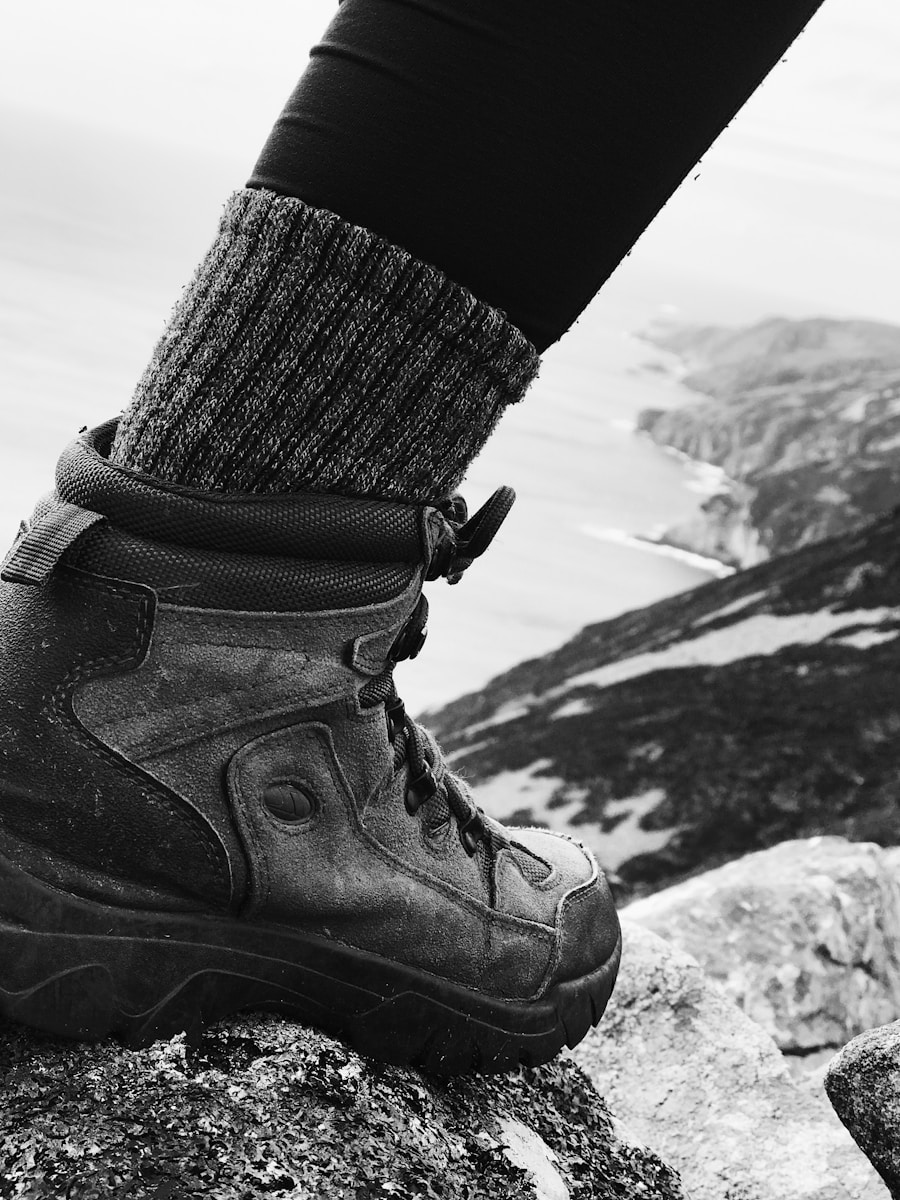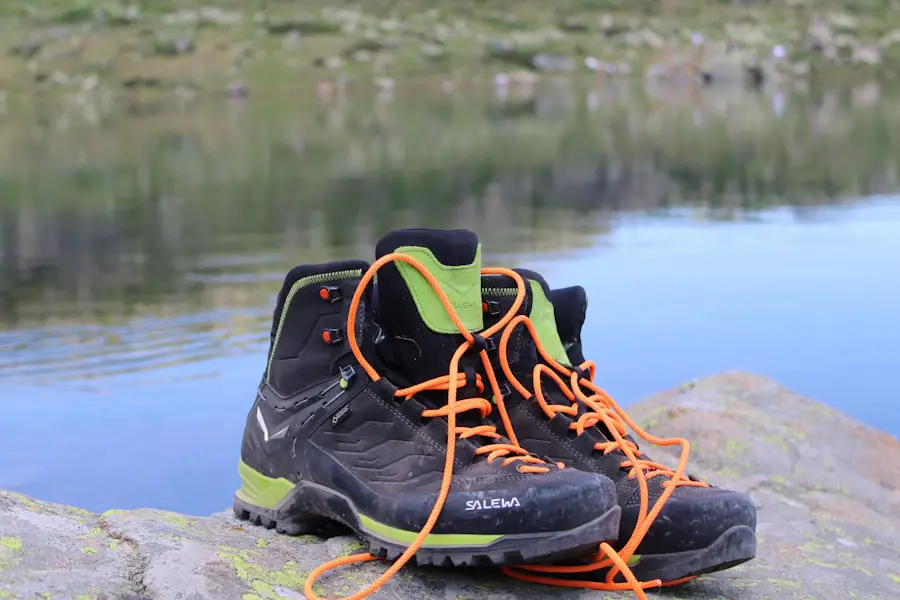High top hiking boots have become a staple in the outdoor enthusiast’s gear collection, offering a unique blend of support, protection, and durability. These boots are characterized by their extended height, which typically rises above the ankle, providing additional coverage and stability. Designed for various terrains and conditions, high top hiking boots cater to both casual hikers and serious trekkers who demand performance and reliability from their footwear.
The materials used in their construction often include leather, synthetic fabrics, and rubber soles, all engineered to withstand the rigors of the trail while ensuring comfort for the wearer. The popularity of high top hiking boots can be attributed to their versatility. Whether navigating rocky paths, muddy trails, or steep inclines, these boots are designed to provide the necessary grip and traction.
Furthermore, advancements in technology have led to the development of lightweight yet robust materials that enhance the overall hiking experience. As outdoor activities continue to gain traction among various demographics, understanding the features and benefits of high top hiking boots becomes essential for anyone looking to invest in quality footwear for their adventures.
The discussion surrounding high top versus low top hiking boots is a common one among outdoor enthusiasts. Proponents of high top boots argue that the added height provides superior ankle support, which is particularly beneficial when traversing uneven terrain or carrying heavy loads. This support can be crucial for preventing sprains and other injuries that may occur during strenuous hikes.
Additionally, high tops often feature a more robust construction that can withstand harsher conditions, making them a preferred choice for those who venture into rugged landscapes. On the other hand, advocates for low top hiking boots emphasize the importance of freedom of movement and flexibility. Low tops typically allow for a greater range of motion at the ankle, which can be advantageous for activities that require agility, such as scrambling or fast-paced hiking.
They are often lighter than their high top counterparts, making them a popular choice for day hikes or less demanding trails. The debate ultimately hinges on personal preference and the specific demands of the hiking environment, as both styles have their unique advantages and disadvantages.
Key Takeaways
- High top hiking boots provide increased ankle support and stability, making them a popular choice for hikers tackling rugged terrain.
- The debate between high top and low top hiking boots often comes down to personal preference and the specific needs of the hiker.
- High top hiking boots are designed to provide extra support and stability, reducing the risk of ankle injuries on uneven terrain.
- When considering terrain and activity, high top hiking boots are best suited for rough, rocky, and steep terrain, as well as for carrying heavy loads.
- While high top hiking boots offer excellent support and protection, it’s important to find a balance between support and comfort to ensure an enjoyable hiking experience.
Support and Stability: The Role of High Top Hiking Boots
Support and stability are two critical factors that high top hiking boots excel in providing. The design of these boots includes features such as reinforced ankle collars and stiffer midsoles that work together to create a stable platform for the foot. This stability is particularly important when navigating rocky or uneven surfaces, where a misstep can lead to injury.
The additional height of high tops helps to lock the ankle in place, reducing the risk of rolling or twisting it during challenging hikes. Moreover, many high top hiking boots incorporate advanced cushioning systems that enhance comfort while maintaining support. This combination allows hikers to tackle long distances without experiencing excessive fatigue or discomfort.
For instance, brands like Merrell and Salomon have developed proprietary technologies that provide shock absorption and energy return, ensuring that each step is cushioned while still offering the necessary support for the ankle. As a result, high top hiking boots are often favored by those who prioritize stability in their outdoor footwear.
Ankle Protection and Injury Prevention

One of the most significant advantages of high top hiking boots is their ability to provide enhanced ankle protection. The extended height of these boots acts as a barrier against potential hazards such as rocks, branches, and other debris that can cause injury during hikes. This protective feature is especially beneficial in environments where ankle injuries are more likely to occur, such as mountainous regions or areas with loose gravel.
In addition to physical protection from external elements, high top hiking boots also play a crucial role in injury prevention through their supportive design. By stabilizing the ankle joint, these boots help to mitigate the risk of sprains and strains that can arise from sudden movements or uneven ground. Research has shown that hikers wearing high top boots are less likely to experience ankle injuries compared to those in low tops, particularly on challenging trails.
This aspect makes high tops an appealing option for individuals who may have previously suffered from ankle injuries or those who are prone to them.
Terrain and Activity Considerations
| Activity | Terrain Considerations | Activity Considerations |
|---|---|---|
| Hiking | Trail difficulty, elevation gain, rocky terrain | Proper footwear, hydration, navigation |
| Mountain Biking | Trail technicality, steep descents, obstacles | Protective gear, bike maintenance, trail etiquette |
| Rock Climbing | Rock type, route difficulty, weather conditions | Safety equipment, belaying techniques, physical strength |
| Skiing/Snowboarding | Snow conditions, slope steepness, tree density | Proper attire, avalanche awareness, skill level |
When selecting hiking footwear, understanding the terrain and specific activities planned is essential. High top hiking boots are particularly well-suited for rugged terrains where stability and support are paramount. For instance, when hiking in mountainous regions with steep ascents and descents, the added height of high tops can provide the necessary grip and security needed to navigate challenging paths safely.
Their robust construction also makes them ideal for wet or muddy conditions, where traction is critical. Conversely, if the planned activities involve less demanding trails or require quick movements—such as trail running or fastpacking—low top hiking boots may be more appropriate. These environments often benefit from the lightweight nature of low tops, allowing for greater agility without sacrificing too much support.
Ultimately, understanding the specific demands of the terrain will guide hikers in choosing between high top and low top options based on their individual needs.
Comfort and Flexibility in High Top Hiking Boots
While high top hiking boots are renowned for their support and stability, comfort and flexibility are also vital considerations when selecting footwear for outdoor adventures. Many modern high tops incorporate advanced materials that enhance breathability and moisture-wicking properties, ensuring that feet remain dry and comfortable during long hikes. Features such as padded collars and tongues further contribute to overall comfort by reducing pressure points around the ankle.
Flexibility is another important aspect that should not be overlooked. While high tops provide excellent support, they should also allow for natural foot movement. Some brands have developed designs that strike a balance between rigidity and flexibility by using softer materials in specific areas of the boot.
This approach enables hikers to maintain a natural gait while still benefiting from the protective features of high tops. For example, models from brands like Columbia and Keen often feature flexible soles that adapt to various terrains while providing adequate support.
Choosing the Right Hiking Boot for You

Selecting the right hiking boot involves considering several factors beyond just height. First and foremost is fit; a well-fitting boot is crucial for comfort during long hikes. It’s advisable to try on multiple pairs while wearing the socks you intend to use on your hikes to ensure an accurate fit.
Pay attention to areas such as toe box space and heel lift; there should be enough room for your toes to wiggle without feeling cramped. Additionally, consider your typical hiking conditions when choosing between high top and low top options. If you frequently hike in rocky or uneven terrain or carry heavy packs, investing in a pair of high top hiking boots may be worthwhile for added support and protection.
Conversely, if your hikes are generally on well-maintained trails or involve fast-paced activities, low tops might be more suitable due to their lightweight nature and flexibility. Ultimately, personal preference plays a significant role; some hikers may prefer the feel of one style over another based on their unique experiences.
Finding the Balance between Support and Comfort
In the world of hiking footwear, finding the right balance between support and comfort is essential for an enjoyable outdoor experience. High top hiking boots offer unparalleled stability and protection for those who venture into challenging terrains, while low tops provide agility and freedom of movement for less demanding trails. Understanding individual needs—such as terrain type, activity level, and personal comfort preferences—will guide hikers in making informed decisions about their footwear choices.
As outdoor activities continue to grow in popularity, so too does the importance of selecting appropriate gear that enhances safety and enjoyment on the trail. Whether opting for high tops or low tops, investing time in research and trying on various models will ultimately lead to a more satisfying hiking experience. With the right pair of boots, hikers can confidently explore nature’s wonders while minimizing discomfort and reducing injury risks along the way.
If you’re considering investing in a pair of high top hiking boots, you may also be interested in reading about the best time to visit Sydney. Sydney is a popular destination for outdoor enthusiasts, and having the right footwear can make all the difference in your experience. Check out this article for a seasonal guide on when to plan your trip to Sydney for optimal hiking conditions.
FAQs
What are high top hiking boots?
High top hiking boots are a type of footwear designed for hiking and outdoor activities. They provide ankle support and stability, and often have a higher cut that extends above the ankle.
Are high top hiking boots better than low cut hiking shoes?
The choice between high top hiking boots and low cut hiking shoes depends on individual preferences and the specific needs of the hiker. High top hiking boots provide more ankle support and stability, which can be beneficial for rough terrain and carrying heavy loads. However, low cut hiking shoes are lighter and more flexible, making them suitable for less demanding trails.
Do high top hiking boots prevent ankle injuries?
While high top hiking boots provide ankle support, they do not guarantee the prevention of ankle injuries. Proper hiking technique, conditioning, and being mindful of foot placement are also important factors in preventing ankle injuries while hiking.
Are high top hiking boots suitable for all types of hiking?
High top hiking boots are suitable for various types of hiking, including rugged terrain, backpacking, and carrying heavy loads. However, for less demanding trails and day hikes, low cut hiking shoes may be more comfortable and practical.
Do high top hiking boots provide better protection from elements?
High top hiking boots often provide better protection from elements such as mud, water, and debris due to their higher cut and more secure fit around the ankle. This can be beneficial when hiking in wet or challenging conditions.
